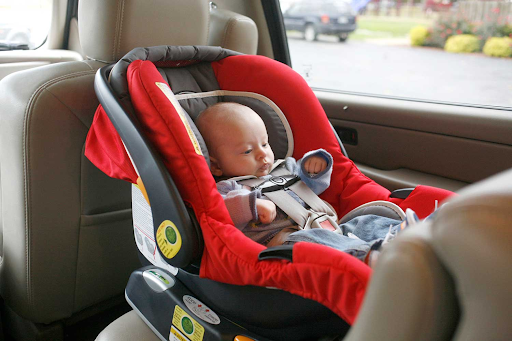Introduction
Child safety in vehicles is paramount for parents as they face selecting the right KIDS… and once they leave the hospital, how long should a baby stay rear facing คาร์ซีท – https://babyhillsthailand.com/car-seat-for-baby/? So, that choice will have a major effect on the safety of your child riding in the car. Most parents, he says, think it is okay to switch to a forward-facing seat at the earliest opportunity, but this is strictly against what safety experts are urging. In this ultimate guide, find out why rear-facing child safety seats are top priority according to five of the most trustworthy sources in the world, tips for setting rear-facing car seat riding limits and what you should know when choosing a product that will help keep your growing kid safe.
Why Rear-Facing Car Seats Are Important
The rear-facing position in a คาร์ซีท is more than just a suggestion; it is the result of research-based safety. Even minor frontal crashes can result in severe force of an impact. Car seats that face to the rear elongate this force throughout a toddler’s back, neck and backbone. This is because their cervical muscles and spinal cords are still growing, which makes them more at risk from accidents.
The fact that this increases safety is the reason why all major international car safety organizations, including our very own American Academy of Pediatrics (AAP), recommends kids to ride rear-facing as long as possible. When you keep your child rear-facing, you’re ensuring that they have the best possible protection during the most critical years of their physical growth.
How Many Rear-Facing Years Are Enough for Your Baby?
A question I hear from parents more than any other is: When can I turn my child forward-facing? The specifics depend on your child’s age, weight, height, and the details of your particular คาร์ซีท.
All infants and toddlers should ride in a rear-facing seat until they reach the highest weight or height allowed by their car safety restraints manufacturer. Many have limits on this, so check the guidelines of your particular product but 2 years old is generally considered to be minimum for riding rear facing. But plenty of modern convertibles are rated to allow children to continue rear-facing up to 40-50 pounds or so.
The best rule is to keep your child rear-facing for as long as the seat allows, including with extended weight or height limits. This includes reading your คาร์ซีท user manual and knowing its limitations. Indeed, there are children who will be only happy remaining rear-facing until they reach their 3rd or even 4th birthday, with huge benefits for the safety of those most important passengers in your car.
Types of Rear-Facing Car Seats
A lot of the parents want to ask about that which type of คาร์ซีท works best for rear-facing. There are three main options:
- Infant Car Seats
The carriers are made just for newborns and young babies, usually accommodating up to 22–35 lb. They are lightweight and very portable but you will need to replace them as your baby gets older.
- Convertible Car Seats
Forward-facing, and so convertibles can be used longer There are often higher weight and height limits for rear-facing, usually making them a more budget-friendly option in terms of longer-term safety.
- All-in-One Car Seats
You really want to get the most time out of your investment, so you may prefer one of these “combo” seats that starts off as a rear-facing seat transitions to a forward-facing seat and then can be converted into a booster.
Common Mistakes to Avoid
Even with the proper คาร์ซีท in place it is important that you install and use it correctly to ensure safety. So here are common mistakes NOT to make:
- Forward Facing Too Early: Do not be tempted to turn too soon; keep your child rear facing until they have reached the height and weight limits.
- Comfortable, Fitting Harness: The harness straps should always be snug on your child– not too tight but just right.
- Wrong Recline Angle: Rear-facing seats have to sit at the right recline angle to help keep the baby’s airway open.
This is how your seat will give you the highest level of safety each time while driving.
Conclusion
Selecting the correct คาร์ซีท – https://babyhillsthailand.com/car-seat-for-baby/ and following recommendations for rear-facing use can be a game changer in keeping your child safe. Most experts national and international agree that the longer infants remain rear-facing, the safer they are. It may take a bit more planning and work, but the result is a son or daughter who is safer in your car whenever you drive.
There’s one more thing you’ve got to remember: what kind of parent are you going to be if not one who makes decisions based on all the available information that keeping your child safe is your number 1 priority? Having your child rear-facing for as long as possible is one step in protecting the littlest human in our life.



